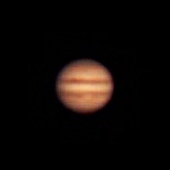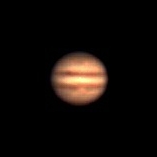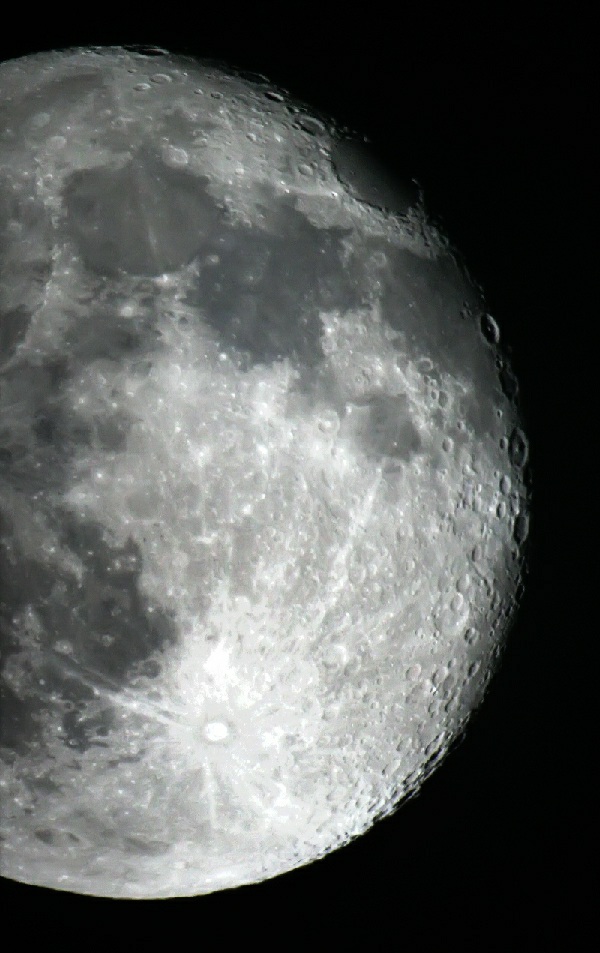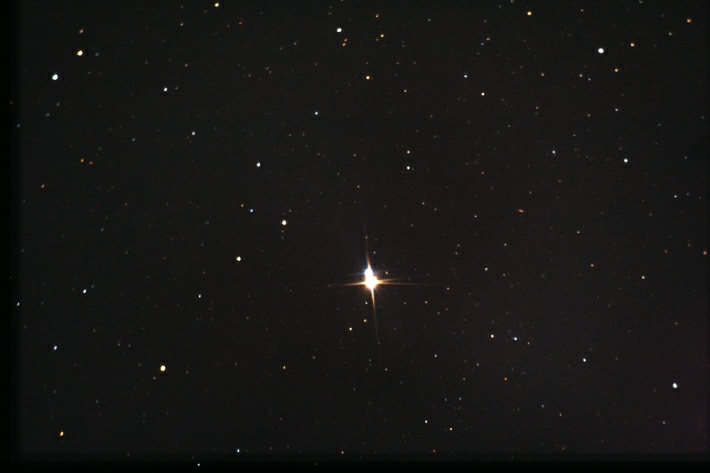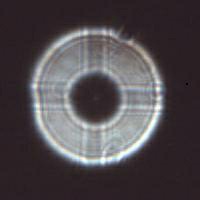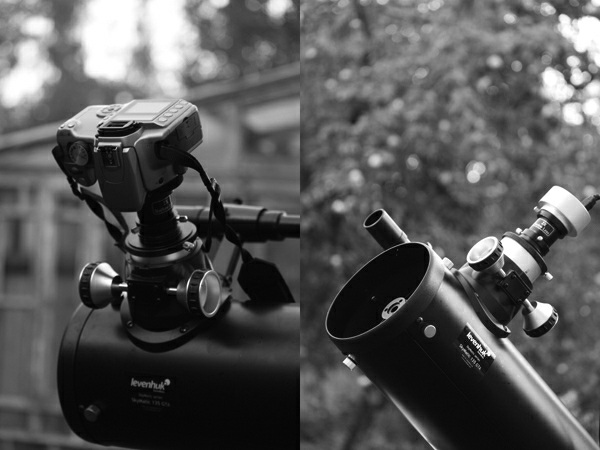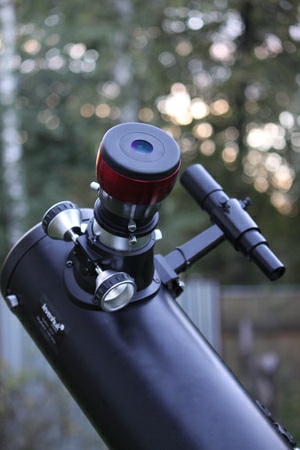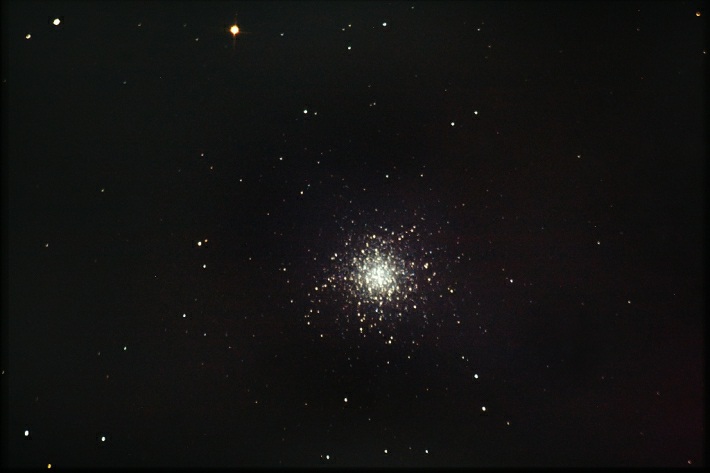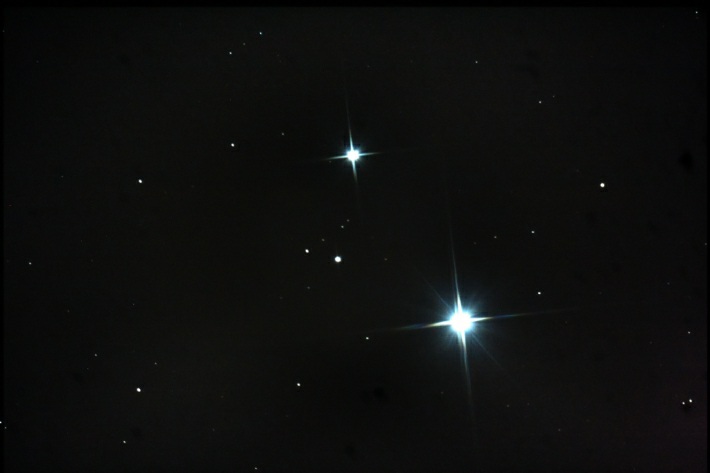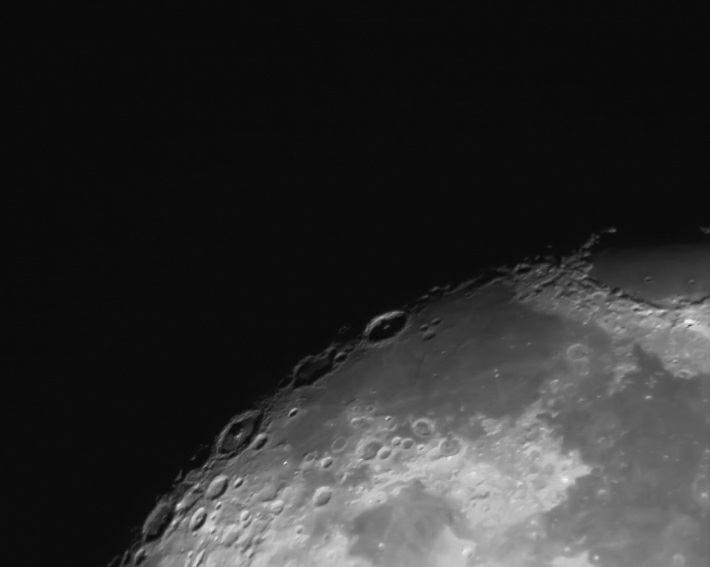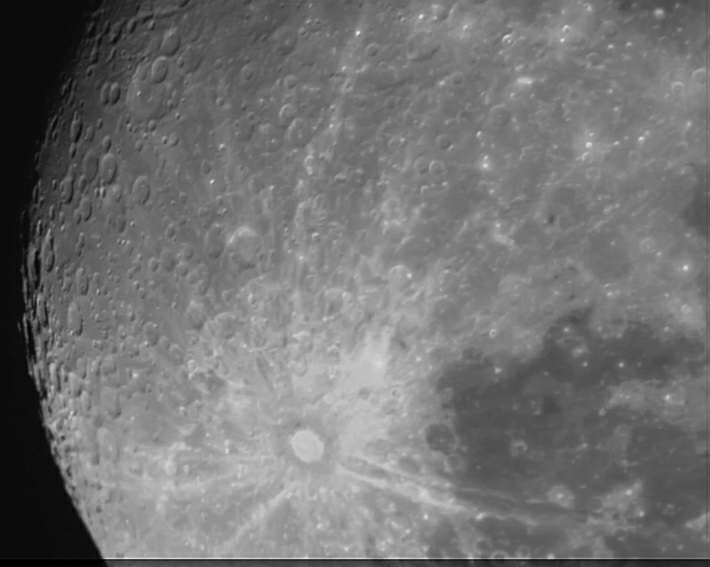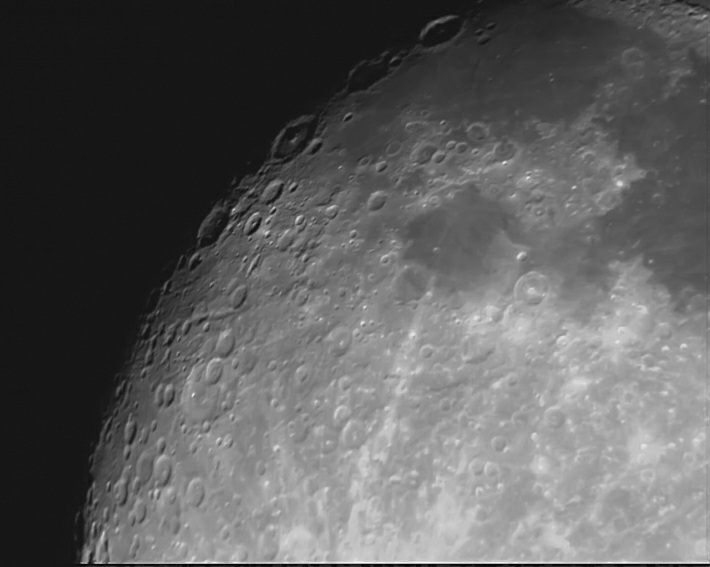Levenhuk SkyMatic 135 GTA Telescope Review
Levenhuk SkyMatic 135 GTA Telescope is a great instrument for primary-level astronomical observations. Levenhuk SkyMatic 135 GTA is a reflecting telescope with a 135-mm parabolic mirror and f/5 focal ratio. This telescope is equipped with an automatic pointing and tracking system.
All the images presented in this review were made with Levenhuk SkyMatic 135 GTA Telescope mounted on SkyWatcher HEQ-5 tripod. Note that the pictures differ from the actual images seen through the telescope eyepiece.
Levenhuk SkyMatic 135 GTA is a wonderful instrument for taking your very first steps in astronomy. This extremely “intelligent” reflector features a 135-mm parabolic mirror, f/5 focal ratio, and automatic guiding system. The optical tube and mount weight and size are quite small - even a junior school kid can transport it in parts to the observing site. Therefore, Levenhuk SkyMatic 135GTA is a perfect portable instrument for countryside observations and hiking tours. Reflectors are usually much lighter than refractors: for example, a 100-mm refractor tube with similar characteristics weighs about 13 pounds. Thus, Levenhuk SkyMatic 135 GTA would make a great gift for children and their first astronomical observations.
Don’t ever forget about special protective aperture filters that you have to use when observing the Sun. Such filters reduce the intensity of light and protect the observer’s eyes from damage.
First and foremost, the telescope is good for observing planets and the Moon. To get highly detailed views of the Moon’s craters and planetary disks, I would recommend buying a 4mm eyepiece or 2x Barlow lens. The first accessory will give you 169x, and the second one – two additional magnifications (135x and 54x).
Observing Jupiter at 169x, you’ll be able to see about eight cloud bands. The two brightest among them can be nominally divided in two additional bands each and you can see heterogeneity of the surface between these additional bands.
Observers will also be impressed seeing Jupiter’s largest moons passing in front of the planet and throwing their shadows on its surface. The Moon is a very bright astronomical object - that is why you should buy a special filter that reduces lunar light.
The telescope kit includes two eyepieces: 10mm and 25 mm (68х and 27х magnification respectively). The low-power 25mm eyepiece is well suited for locating celestial objects; and for observing star fields, extended star clusters, such as NGC 869, Hyades, Pleiades, Andromeda Galaxy. Moreover, the 25mm eyepiece gives you the lowest useful magnification power. The lowest useful magnification is determined by exit pupil diameter that should be equal to the diameter of the pupil of the dark-adapted human eye (6 mm). Such magnification is used for viewing faint deep-sky objects and comets. Note that all magnifications below this value are no longer useful – such eyepieces pass more light than the eye can accept.
Levenhuk SkyMatic 135GTA Telescope doesn’t suffer from chromatic aberrations, so there are no color distortions (a common problem in achromatic refractors). Chromatic aberrations lead to reduced image sharpness, and sometimes may result in colored contours, stripes, and spots on images (that aren’t present on the observed object in reality).
Point Levenhuk SkyMatic 135 GTA between Alpha and Delta Cephei. In the middle you’ll see a beautiful garnet color star - Mu Cephei. The star is also called Herschel’s Garnet Star – named for the famous British astronomer William Herschel who noted and described the star. This garnet star looks truly alluring and makes you want to observe it again and again.
It’s important to remember that during nighttime observations your equipment will pass a so-called ‘dew point’. Levenhuk SkyMatic 135 GTA is, of course, no exception – the eyepieces and diagonal mirror will be covered with dew at some point. That’s why you should buy or make a special lens hood. The easiest way is to roll a piece of paper. You can also use the gentle flow of warm air from a hair dryer on eyepieces (if you have access to power). But don’t use a hair dryer on the telescope mirror!
When forming your own observing plan for the night, use maps, rotating star charts, planetarium software, but don’t forget that Levenhuk SkyMatic 135GTA Telescope allows you to observe not only Messier catalogue objects, but ‘usual’ stars as well. This telescope model allows you to see binary stars with angular separation of over 1”. That means a wide range of beautiful binary stars–and not only them. When observing binary and multiple stars, try to start with less close pairs and then go to closer ones, alternating low- and high-power eyepieces. If you have not had any experience with telescopes before, point the Levenhuk SkyMatic 135 GTA at Cygnus constellation and then find a star that marks the base of the Cross. This star is called Albireo. In my opinion, this is the most impressive binary star of the Northern Hemisphere. One of the stars has bright yellow color, the other one – blue. The components are separated by 35 seconds of arc; therefore you should use the lower power 25 mm eyepieces when observing it.
Let’s talk about the optics. The small focal ratio of the telescope grants high precision during the primary mirror manufacturing process. The optical design includes one more (flat) mirror that points the light rays reflected from the primary mirror out to an eyepiece. The Newtonian focus turned out to be the simplest and most convenient for reflecting telescopes. That simplicity is the key. A lot of large telescopes around the world are Newtonians.
To test the Levenhuk SkyMatic 135 GTA and make sure about its great quality, try to observe close binary pairs (with angular separation of about 1”) on moonless and clear nights. In the center of the field of view Levenhuk SkyMatic 135 GTA features great image quality (the angular size of the perfect quality zone is approximately 5 minutes). And then, as it happens with all Newtonians, the effect of coma starts to increase. Outside and inside focus images are quite smooth; at high magnifications you can see a diffraction ring around the star in the focus point.
The telescope is pre-adjusted at the factory and remains adjusted for a long time, but you will eventually need to do it on your own. That’s why we recommend that you buy a cheap Cheshire Eyepiece or laser collimator for alignment. Reflecting telescopes are easy to align; the whole process takes just about 5 minutes.
I’d like to say a few words about the optical tube design. Levenhuk SkyMatic 135 GTA is equipped with an optical finderscope with crosshairs. Before you start observing, don’t forget to align the finderscope with the main telescope. If you do that carefully, the chosen object will be just in the center of the field of view of the finderscope. The eyepiece node and finderscope are located up high on the tube, designed especially for visual observations. With the included 2” eyepiece adapter you can significantly expand your capabilities by adding, for example, eyepieces with 24mm or 32mm focal lengths.
Talking about the cons, I’d like to note the focuser backlash that appears when refocusing. It results in displaced images. It can be reduced with the locking screws, but not completely. And the screw shouldn’t be overtightened. In general, the construction is solid and reliable. Newtonian design is good for not only visual observations, but for astrophotography as well. The images below show an SLR camera and special astrophotography camera mounted on the Levenhuk SkyMatic 135 GTA.
All the images in this review were made with the telescope focuser and focal length extension (Barlow lens was used for this purpose). Barlow lens doesn’t come in the kit, so you should buy it additionally. For more quality shots of galaxies and nebulae, we’d recommend replacing the focuser with a low-profile one and adding coma corrector. The coma, or comatic aberration, is an aberration that can be noticed mostly on the edges – the object appears not as a desired dot, but with a tail, like a comet (hence the name). As you can see, Levenhuk SkyMatic 135 GTA is quite universal and is a solid base for further enhancements and modernization.
You can easily shoot the Moon and planets using the standard focuser from the kit and any astrophotography camera designed for this purpose. Deep-sky objects are better when shot with SLR cameras (Canon, Nikon) or special CDD cameras.
Note that shooting astronomical objects with long exposure with this telescope and its alt-azimuth mount will require installation on an equatorial wedge.
Let’s return to the Albireo shot. This image (15 frames, 30 seconds each) was made with Levenhuk SkyMatic 135 GTA and Canon EOS 350D (ISO1600). You can clearly see that one component is white and the other is golden orange. But, when observed visually, they appear as blue and golden yellow.
On the following image you can see Messier 13 (M13) in the constellation of Hercules (25 frames, 30 seconds each).
The next image (15 frames, 30 seconds each) shows the double star formed by Mizar and Alcor in the constellation Ursa Major. The angular separation is about 12 arc minutes. If you look closely, you will notice that the brightest star has eight rays (four long and four short). That means that Mizar is also a double star. Levenhuk SkyMatic 135 GTA separates this pair with ease.
Levenhuk SkyMatic 135 GTA together with an astro camera can make a series of shots (for example of the Moon or planets) and, after that, you can choose the best shot using special software. The images of the Moon that you can see below were made with QHY-5 astro camera and Canon EOS 350D camera.
Summary
Levenhuk SkyMatic 135 GTA Telescope is a perfect choice for those who want to familiarize themselves with the stars. Beginners should first get some observing experience and only then start using more powerful, high-aperture models. Even when you feel like your telescope has exhausted its possibilities, don’t rush to say your goodbyes: Just a little refinement will turn it into a wonderful lightweight astrophotography telescope that will bring many exciting nights, beautiful astro shots, and upgrade your image processing skills.
Any reproduction of the material for public publication in any information medium and in any format is prohibited. You can refer to this article with active link to eu.levenhuk.com.
The manufacturer reserves the right to make changes to the pricing, product range and specifications or discontinue products without prior notice.



